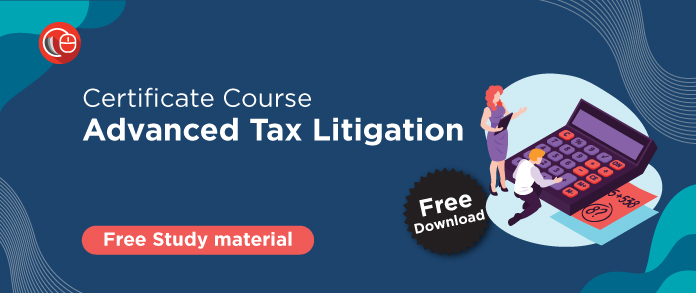This article is written by Anam Khan, from Hidayatullah National Law University. We are aware of how an increase in public activities has caused public expenditure to increase manifold in the recent past and it continues to be increasing in almost all the countries around the globe. It has made tax payment mandatory. This has further given rise to a need for a systematic tax. This article talks about the right of carry-forward and set-off of loss arising in a business or profession.
Table of Contents
Introduction
It is very true that studying the history of a particular subject enables us to have a better understanding of the same. Understanding the historical events and trends not only adds to our knowledge base but also helps us develop a greater appreciation for recent events. The history of taxes dates back to Ancient Egypt dynasty. It was way back in 3000-2800 BC, under the old kingdom of Egypt that the first widespread history of taxation was recorded. Further, it was the development of State from communities that gave rise to the necessity of taxes and hence a tax system was invented.
It is said that the present tax system is based on the ancient system- the theory of maximum social welfare. We have surely come a long way from the times of Manu. The way of carrying out business has evolved. But the key concept of ‘maximum social welfare’ remains deeply embedded.
Profit and loss are two different sides in the business coin. As exciting as it can be to earn profits, incurring losses are equally difficult to digest. The Income Tax Department is known for its heavy collection of taxes. But the lesser-known fact is that they also provide relief when one person incurs a loss. This article tries to break through the harsh perception of the Income Tax Department and acquaint the readers about the contrary side; where they provide provisions of set-off and carry-forward for the assessee under certain terms and conditions.
Defining the terms
Set-off and carry-forward
Set-off of losses, as the name suggests, can be understood as adjusting the losses incurred by a person against his profit or income in a particular assessment year. If it so happens that it is not possible to set-off the losses in the same assessment year, either because the assessee has not gained required profit or because the income generated is also less than the amount is carried forward to the next year. The process of setting off of losses and their subsequent carry-forward maybe are covered under the following steps-
- An inter-source adjustment under the same source of income.
- Inter-head adjustment in the same assessment in the same year. (This is applied only if a loss cannot be set-off under step-1)
- Carry-forward of a loss. (This is applicable only when 1 and 2 are not)
Heads of income
There are a total of five heads of income under which adjustments of the loss are made-
- Salary head
- Profit head
- Capital Gains
- House Property
- Other Sources
The income of an assessee is classified under the above-mentioned heads as provided by the Income Tax Act. The same heads are used for the purpose of set-off and carry-forward as well. However, because it is not possible to have any loss under the salary head it is not possible to use the same for any set-off or carry-forward. Further, set-off and carry-forward under the head of other sources are not allowed. So, for the purpose of adjusting losses, the heads of income which are used are- profit head, capital gains and house property.
Set-off of losses
As mentioned earlier set-off can either be inter-source or intra-head.
Inter-source adjustment – Sec. 70
The general rule under the provision of Section 70 states that- if the net result for any assessment year, in respect of any source under any head of income, has incurred a loss, the assessee is entitled to have the amount of such loss set-off against his income from any other source under the same head of income for the same assessment year.
Illustration
A has two businesses- business A and B. While the returns from business A is Rs. 5 lakh, business B has incurred a loss of Rs. 2 lakh. In this case, the loss of Rs. 2 lakh from business B can be set-off against income of Rs. 5 lakh from business A. It must be noted that A does not have any option to set-off or to not set-off the loss of business B.
General exceptions
- Loss from speculation business– The loss incurred in a speculation business can only be set-off by a profit earned in the speculation business.
- Loss from a specified business- Any loss computed in respect of any specified business referred to in Section. 35AD, shall not be set-off against profits and gains, if any, of any other specified business.
- Long-term capital loss– Long term capital loss can only be set-off against long term capital gain.
- Loss from the activity of owning and maintaining race horses– A loss incurred in the business of owning and maintaining race horses cannot be set-off against, if any, from any other source except income from such business.
- Loss cannot be set-off against winning lotteries, crossword puzzles etc.- It is by virtue of Section. 58(4), a loss cannot be set-off against winnings from lotteries and other forms of gambling.
- Loss from sale of securities.
Other key points
Barring the aforementioned cases, any other loss can be set-off against any other income within the same head of income. For example-
- Loss from house property can be set-off against income from any other house property.
- Loss from a non-speculation business can be set-off against income from speculation or non-speculation business.
- Loss from a non-speculative business can be set-off against income from business specified under Section 35AD.
- A short-term capital loss can be set-off against any capital gain (whether short-term or long-term).
- Under the head of ‘other sources’ loss from an activity can be set-off against income but other than winning from lotteries, crosswords etc.
If income from a particular source is exempted from tax, e.g. income exempt from tax under section 10, loss from such source cannot be set-off against income chargeable to tax.
If there is income from one source and loss from another source within the same head of income, one has to set-off the loss against the income. Barring the cases of exceptions, in all other cases, a loss has to be first set-off against income within the same head of income. No other option is available. For example, a long-term capital loss can be set-off against only long-term capital gains. However, a short-term capital loss can be set-off against any capital gains.
Inter-head adjustment – Sec. 71
The general rule under the provision of Section 71 states that- where the net result of the computation made for any assessment year in respect of any head of income is a loss, the same can be set-off against the income from other heads too.
Illustration
A has two speculative businesses B and C. Besides his business, he has income from house property. The result from the three sources of income is given below-
|
Business income |
Property income |
|
|
Business B Business C Income from house property |
(-) 2,90,000 70,000 |
5,10,000 |
|
(-) 2,20,000 |
5,10,000 |
In this case, a business loan of Rs. 2,20,000 can be adjusted against the property income of Rs. 5,10,000. Consequently, property income is reduced to Rs. 2,90,000. It may be noted that A does not have any option to set-off the business loss against property income.
Exceptions
-
- Loss in a speculative business- it cannot be set-off against any other income.
- Loss in a business specified under section 35AD- loss, computed in respect of any specified business referred to in section 35 AD cannot be set off against any other income.
- Loss under the head capital gains– loss under this head can only be set-off by under the head of capital gains.
- Loss from the activity of owning and maintaining horses- cannot be set off against any other income head.
- Business loss cannot be set-off against salary income.
- Any house property loss exceeding Rs. 2,00,000- cannot be set-off against income under other heads of income.
- Loss cannot be set-off against winnings from lotteries etc- by virtue of Section 58(4) a loss cannot be set-off against winning from lotteries.
- Loss from the purchase of securities.
Example
A taxpayer has the following income/loss-
|
Current year |
Next year |
|
|
Business income Long-term capital |
(-) 1,00,000 2,30,000 |
8,00,000 3,00,000 |
Long term capital gain is taxable at a lower rate. Even then, the assessee cannot avoid set-off of business loss in the current year under section 71 against the capital gain and carry forward the business loss to the next year. In other words, the business loss has to be set-off against capital gain. There is no other alternative option available. After adjusting the business loan of Rs. 1,00,000 on remaining long-term capital gain of Rs. 1,30,000, he will have to pay tax during the current year.
Carry-forward of loss
In cases where the loss cannot be set-off either under the same head or under any other head of income, because of absence or inadequacy of income in the same year, then that loss is carried forward and set off against the income of the subsequent year. According to the provisions of the Act, the following loses can be carried forward-
- Loss under the head ‘income from house-property’ (Sec. 71B).
- Loss under the head “profits and gains of business or profession” (Sec. 72 and 73).
- Loss under the head ‘capital gains’.
- A loss incurred from the activity of owning and maintaining horses (Sec. 74).
Restrictions
The right of carry-forward and set off of loss arising in a business is subject to the following restrictions-
- Loss can be set-off only against business income.
- Loss can be carried forward by the person who incurred the loss.
- Loss can be carried forward for 8-years.
- Return of loss should be submitted in time.
- Continuity of business is not necessary.
Conclusion
The concept of set-off and carry-forward helps us understand that the tax system is flexible. There is sufficient scope of adjustment of losses under this system. The rule of set-off and carry-forward must be followed in strict accordance with the exemptions and restrictions mentioned in the Income Tax Act, 1961.
LawSikho has created a telegram group for exchanging legal knowledge, referrals and various opportunities. You can click on this link and join:
 Serato DJ Crack 2025Serato DJ PRO Crack
Serato DJ Crack 2025Serato DJ PRO Crack











 Allow notifications
Allow notifications



